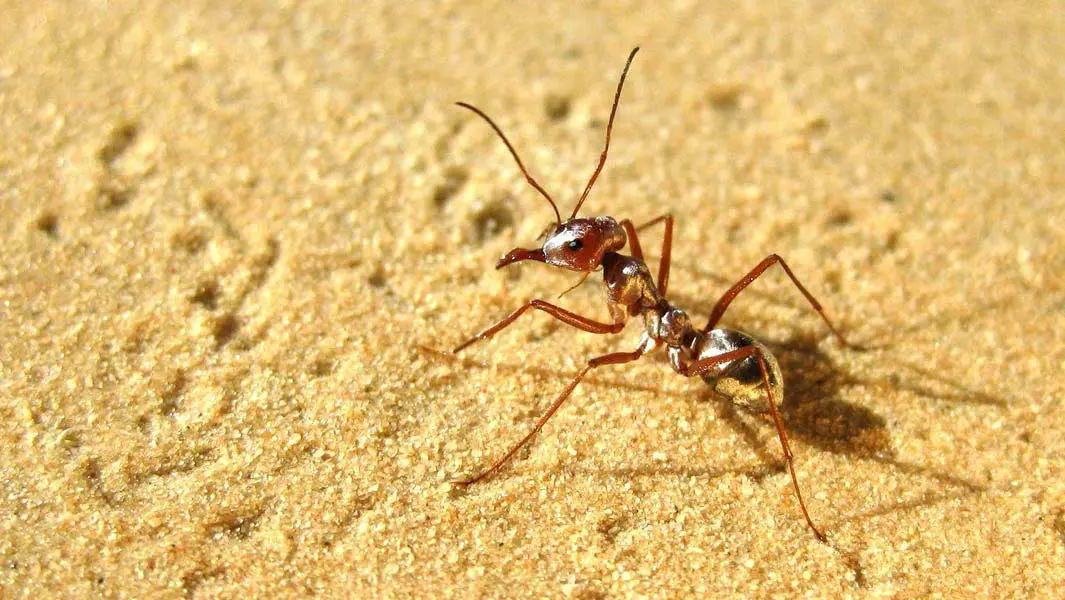


The Saharan silver ant (Cataglyphis bombycina) of northern Africa can reach speeds of 85.5 centimetres (2 feet 9 inches) per second – or 108 times its own body length – when running at full pelt. By contrast, the world's fastest man, Usain Bolt (Jamaica), ran at "just" 5.35 times his body height per second during his record-breaking 100 m sprint in 2009. The ants attain such speeds thanks to relatively short legs that can move with extraordinary velocity (with swing rates of up to 1,200 millimetres – or 47.2 inches – per second). They also adopt a galloping gait, with brief interludes where all of their feet are lifted off the ground; reducing contact with the sand is a useful ability when surface temperatures in the dunes where they live can soar to 70 degrees Celsius (159 degrees Fahrenheit). When running flat out, Saharan silver ants can complete as many as 47 strides per second (Usain Bolt achieves “only” four per second). The research was published in the Journal of Experimental Biology on 16 October 2019.
The scientists clocked these speeds by placing an aluminium tube at the entrance of a Saharan ant nest with a feeder located at the end. A camera placed above the channel recorded the occupants as they departed and returned from collecting food.
Based on body lengths per second, the fastest-running animal overall is the Californian coastal mite (Paratarsotomus macropalpis), which can move at 322 body lengths per second. Relatively speaking, that’s around 20 times faster than the cheetah (the fastest land mammal over short distances) and the equivalent of an adult human moving at approximately 2,100 km/h (1,300 mph)!
As well as being the speediest ant, several species of Cataglyphis ants also boast the highest thermotolerance in the animal kingdom among terrestrial species. Specimens have logged critical upper temperatures of 53°C (127°F), though they can only endure this peak heat for a matter of seconds.
The research was conducted by Sarah Pfeffer, Verena Wahl, Matthias Wittlinger and Harald Wolf of Ulm University (Germany).